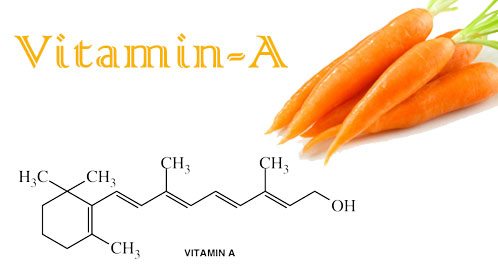In PLV (mechanical ventilation), oxygen - carrying fluids - is dripped through the lungs into the lungs of the patient. In this article I will describe how PL V is used today and how patients who receive it can be cared for. The currently preferred liquids are liquids with oxygen and carbon dioxide bearing properties (e.g. liquid oxygen, liquid carbon monoxide). Perflubron helps to open collapsed alveoli, increase gas exchange and improve lung conformity so that the ventilator can operate at the same level it reaches. This improved conformity allows ventilation with increased tidal volume, resulting in increased gas exchange and PFC fluids in the lungs, which can contribute to improved ventilation and mismatch of the perfusion. ...

This vitamin has an antioxidant effect, but
also produces pigments for the retina and promotes good vision,
especially in low light.
It is designed to protect cells from
toxic substances in the body that destroy normal cell function and
division, while minimizing the risk of inflammatory diseases and cancer.
Vitamin A is a fat-soluble vitamin that is naturally present in many
foods, but becomes toxic when too much vitamin A is absorbed over a long
period of time and accumulates in the body. Toxicity is most common in
people who take vitamins and supplements preformed with vitamin A.
The first type of pre-formed vitamin A
is found in meat, poultry, fish and dairy products. The second variety,
provitamin A, is found in plant products such as fruits, vegetables,
cereals, nuts, seeds, legumes and seeds.
By far the most important provitamin
carotenoid is beta-carotene, and it is responsible for a variety of
health benefits such as heart health, eye health and skin health. The
other prov vitamins and carotenoids consist of alpha - carotene and beta
cryptoxanthin, but by far the most important of these is beta -
carotene.
A and other carotenoids found in food
are not converted into vitamin A, but provitamin A itself is metabolized
to support the vitamin's important biological functions.
Although the retinoids are very
bioavailable and stored in the tissue, the vitamin A derived from animal
vitamin A can accumulate in the blood and become toxic. Vitamin A,
which comes from animal sources, is dissolved and absorbed by duodenal
mucosal cells in various forms.
There are different classes of
carotenoids, but there is evidence that all carotenoids work together to
achieve their health benefits. Vitamin A in fruits and vegetables is in
the form of a provitamin or a precursor of vitamin A. This precursor is
also known as the human body, which has to convert the carottesoids
into viable retinoids.
Vitamin A is actually an antioxidant
substance that plays an important role in protecting the skin, eyes and
other parts of the body. Vitamin A also helps the eye surface and mucous
membranes on the skin to be an effective barrier against bacteria and
viruses, reducing the risk of eye diseases such as cataracts, macular
degeneration, glaucoma, eye ulcers and even cancer. Read more about the
health benefits of vitamin A in fruits and vegetables, including vitamin
eye drops for the prevention and treatment of eye diseases.
A pre-formed vitamin A, also called
retinol, is contained in animal products, but has many other uses.
Vitamin A often acts as an antioxidant to combat cell damage, and it is
one of two types of vitamins responsible for protecting the skin and
mucous membranes in the eye and preventing eye diseases. It is a
fat-soluble vitamin found in fruits, vegetables, nuts, seeds, legumes,
fish, meat, eggs, dairy products and some nuts and seeds.
Some of the best sources are fortified
milk and eggs, as well as dairy products such as milk, eggs and cheese.
Other good sources of vitamin A in the US and other countries include
nuts, seeds, legumes, fish, meat, nuts and seeds, and some fruits.
Retinal is a form of vitamin A that
plays a crucial role in eye health, and due to the important function of
the retina, vitamin deficiency is often characterized by blurred vision
and night blindness. Other carotenoids that can be converted into
vitamin A in the body are found in oranges, fruits and vegetables.
Vitamin A is available to humans because
its carotenoids play an important role in the development of the retina
and many other organs and tissues.
In rare cases, certain people cannot
convert the carotenoids into vitamin A and should consume the vitamins
A, which is found in animal foods or supplements. Preformed vitamin A
has been found, people should observe an increase in vitamin levels in
their blood and other parts of their body.
The type of vitamin A in vegetables is
actually beta-carotene, which is present in pro-vitamin form. Many
people think they eat the best source of vitamins A when consuming
vegetables such as carrots, broccoli, cauliflower, cabbage and other
vegetables. However, these vegetables, as well as some fruits, beans,
nuts and seeds, are not the source of the active vitamin A.
A is also associated with vitamin
toxicity in extremely high doses, which is common in dietary
supplements. Vitamin A toxicity from supplements such as vitamin B12 and
vitamin C is not only widespread, but has also been associated with
vitamin C toxicity in some cases.
Vitamin A comes in many different forms,
which are generally divided into two main categories: retinol (when
taken with food) and preformed from animal products (meat and dairy
products). Vitamin A can be absorbed in two different ways, the other
being vitamin D (K.E.). When high doses are needed, it is usually
absorbed through the skin in the form of retinsol and can also be
embedded in the blood if it is needed for a higher dose.
Cited Sources:
https://www.drstevenlin.com/vitamin-a-benefits/
https://www.drweil.com/vitamins-supplements-herbs/vitamins/facts-about-vitamin-a/
https://www.everydayhealth.com/drugs/vitamin-a
https://www.myfooddata.com/articles/food-sources-of-vitamin-A.php
https://ods.od.nih.gov/factsheets/VitaminA-Consumer/
https://parentingpod.com/vitamin-a/
https://ods.od.nih.gov/factsheets/VitaminA-HealthProfessional/
https://www.allaboutvision.com/nutrition/vitamin_a.htm
https://www.herbwisdom.com/herb-vitamin-a.html
https://www.livescience.com/51975-vitamin-a.html
https://www.drweil.com/vitamins-supplements-herbs/vitamins/facts-about-vitamin-a/
https://www.everydayhealth.com/drugs/vitamin-a
https://www.myfooddata.com/articles/food-sources-of-vitamin-A.php
https://ods.od.nih.gov/factsheets/VitaminA-Consumer/
https://parentingpod.com/vitamin-a/
https://ods.od.nih.gov/factsheets/VitaminA-HealthProfessional/
https://www.allaboutvision.com/nutrition/vitamin_a.htm
https://www.herbwisdom.com/herb-vitamin-a.html
https://www.livescience.com/51975-vitamin-a.html
Comments
Post a Comment